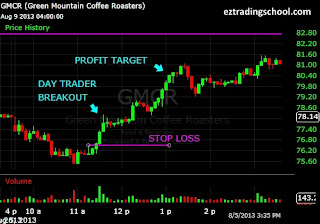There was once a time when the only people who were able to trade
actively in the stock market were those working for large financial
institutions, brokerages, and trading houses. But, with the rise of the
internet and online trading houses, brokers have made it easier for the
average individual investor to get in on the game.
Day trading can turn out to be a very lucrative career, as long as you do it properly. But it can also be a little challenging for novices—especially for those who aren't fully prepared with a well-planned strategy. Even the most seasoned day traders can hit rough patches and experience losses. So, what exactly is day trading and how does it work?
Day trading is defined as the purchase and sale of a security within a single trading day. It can occur in any marketplace but is most common in the foreign exchange (forex) and stock markets. Day traders are typically well-educated and well-funded. They use high amounts of leverage and short-term trading strategies to capitalize on small price movements in highly liquid stocks or currencies.
Day traders are attuned to events that cause short-term market moves. Trading the news is a popular technique. Scheduled announcements such as economic statistics, corporate earnings or interest rates are subject to market expectations and market psychology. Markets react when those expectations are not met or are exceeded, usually with sudden, significant moves, which can benefit day traders.
Day traders use numerous intraday strategies. These strategies include:
In our videos, you’re going to learn how to day trade stocks, proper risk management strategies, preparing in the pre-market, scanning for low and high float stocks, trading red to green moves, gap & go's, dip buying.
We teach a method of trading based on price action, so you learn how to read and anticipate market moves, allowing you to adapt to all types of market conditions. Some indicators are also used to help new traders see how the price action is unfolding.
Day trading can turn out to be a very lucrative career, as long as you do it properly. But it can also be a little challenging for novices—especially for those who aren't fully prepared with a well-planned strategy. Even the most seasoned day traders can hit rough patches and experience losses. So, what exactly is day trading and how does it work?
Day trading is defined as the purchase and sale of a security within a single trading day. It can occur in any marketplace but is most common in the foreign exchange (forex) and stock markets. Day traders are typically well-educated and well-funded. They use high amounts of leverage and short-term trading strategies to capitalize on small price movements in highly liquid stocks or currencies.
Day traders are attuned to events that cause short-term market moves. Trading the news is a popular technique. Scheduled announcements such as economic statistics, corporate earnings or interest rates are subject to market expectations and market psychology. Markets react when those expectations are not met or are exceeded, usually with sudden, significant moves, which can benefit day traders.
Day traders use numerous intraday strategies. These strategies include:
- Scalping, which attempts to make numerous small profits on small prices changes throughout the day
- Range trading, which primarily uses support and resistance levels to determine their buy and sell decisions
- News-based trading, which typically seizes trading opportunities from the heightened volatility around news events
- High-frequency trading (HFT) strategies that use sophisticated algorithms to exploit small or short-term market inefficiencies
In our videos, you’re going to learn how to day trade stocks, proper risk management strategies, preparing in the pre-market, scanning for low and high float stocks, trading red to green moves, gap & go's, dip buying.
We teach a method of trading based on price action, so you learn how to read and anticipate market moves, allowing you to adapt to all types of market conditions. Some indicators are also used to help new traders see how the price action is unfolding.
- How to build a first class trading career.
- Day trading basics. What you need to know about day trading and how to choose the best trading strategy to suit your trading style.
- How to identify and execute low-risk high probability trades.
- How to easily determine market direction.
- 12 of the world’s best day and swing trading strategies for high probability trading.
- Easy to learn rules-based strategies for trend trading, trend continuation, breakouts and reversal points.
- How to trade pivot bounces. Another strategy the professionals’ trade every day.
- How to dramatically improve your trading results using an anchor chart. The top down approach.
- How to build a day trading career part time or full time.
- Which are the best technical indicators to use in day trading and the indicator settings I use allowing you to customize standard indicators.
- Clear and concise rules when to enter a trade.
- Clear and concise rules when to take profits and exit a trade.
- How to master money management and limit your risk.
- Precise methodology’s for identifying and trading with the trend and counter trend.
- How to pinpoint market turns and changes in trend with a high degree of accuracy.
- The best time frames to trade.
- How to develop the mindset of an epic day trader. The psychology of the master day trader.
- How to use my trade confirmation checklist.
- How to recognize a change in trend and maximize your trade profit on the next trade.
- And a whole lot more!
As an Amazon Associate I earn from qualifying purchases.

Comments
Post a Comment